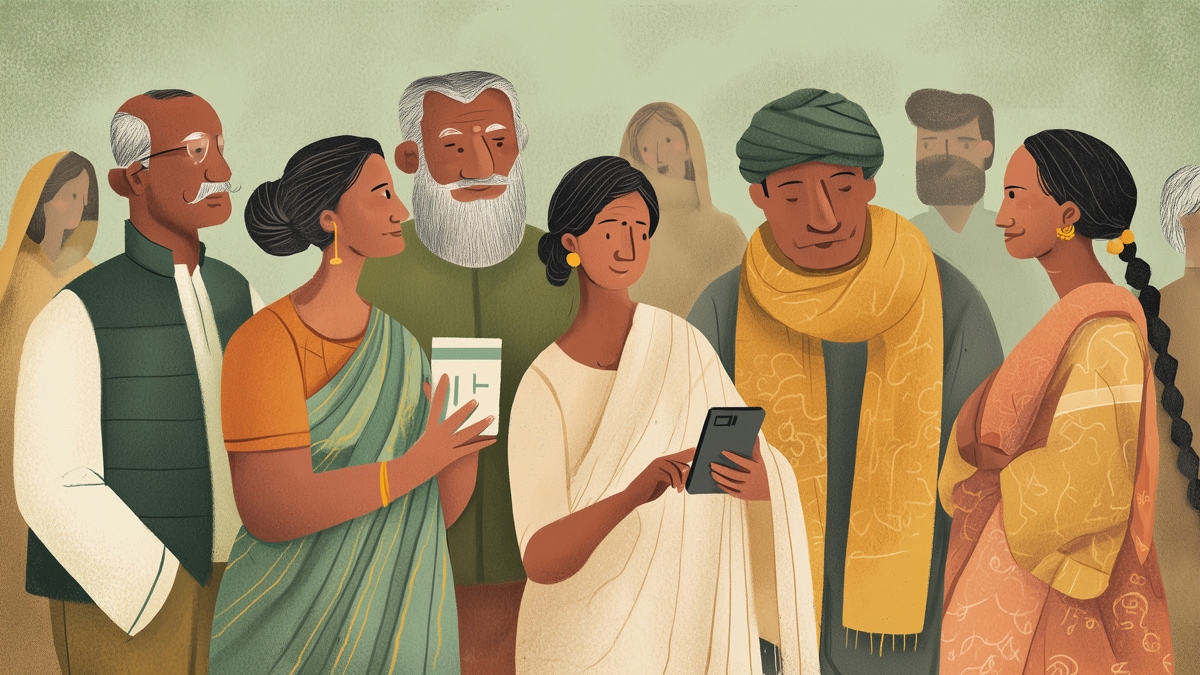

India's journey to efficiently serving its people at scale is a multifaceted story, encompassing innovations in electoral processes, digital infrastructure, and social welfare delivery. The nation's experiences offer valuable lessons in leveraging technology and well-defined processes to empower citizens and ensure inclusive growth.
Election Management: A Foundation of Democracy
India's commitment to democratic principles is exemplified by its robust election management system. The Election Commission of India (ECI) is constitutionally mandated to conduct elections for all legislative bodies at the federal and state levels, as well as district-level bodies. The ECI is renowned for its independence and impartiality, a reputation earned through decades of ensuring free, fair, and transparent elections.
The scale of India's electoral operations is staggering. The ECI oversees electoral activity in 672 districts, managing an electorate of over 850 million voters with diverse ethnic, religious, and linguistic backgrounds. This requires deploying millions of polling staff to nearly a million polling stations, often in remote and challenging terrains.
Over the years, the ECI has embraced technological advancements to enhance the efficiency and integrity of the electoral process. Electronic Voting Machines (EVMs) have replaced traditional ballot papers, streamlining the voting and counting processes while reducing errors. The ECI also closely monitors candidates' expenditures to curb illegal spending during election campaigns. The Model Code of Conduct, evolved through consensus among political parties, serves as a unique framework for ensuring a level playing field.
Digital Transformation: Empowering Citizens and Enhancing Governance
In recent years, India has undergone a remarkable digital revolution, transforming its infrastructure, governance, and public services. This transformation has been driven by key initiatives such as Aadhaar, the world's largest digital identity program; the Unified Payments Interface (UPI), a real-time payment system; and DigiLocker, a platform for issuing and verifying documents.
Aadhaar provides a unique digital identity to over 1.1 billion Indians, enabling authentication anytime, anywhere. It has become crucial for accessing various government services, linking subsidies, and facilitating rural banking services. UPI has revolutionized digital payments, empowering millions of unbanked individuals to participate in the formal financial system. DigiLocker has transformed how citizens access and authenticate their documents, promoting paperless governance.
These digital platforms are part of India's Digital Public Infrastructure (DPI), which refers to foundational digital systems that are accessible, secure, and interoperable. DPI has been instrumental in transforming the digital economy and improving citizen service delivery.
Direct Benefit Transfer: Delivering Welfare Efficiently
The Indian government has implemented Direct Benefit Transfer (DBT) to improve the efficiency and transparency of welfare schemes. DBT involves directly transferring subsidies, pensions, scholarships, and other benefits to beneficiaries' bank accounts, eliminating intermediaries and reducing leakages.
The JAM Trinity – Jan Dhan (bank accounts), Aadhaar, and Mobile – has been key to the success of DBT. Jan Dhan Yojana has provided access to bank accounts for millions of unbanked individuals, while Aadhaar ensures targeted delivery of benefits. Mobile connectivity further enhances accessibility and convenience.
DBT has yielded significant results, including a reduction in leakages and corruption, empowerment of beneficiaries, and expedited delivery of benefits. During the COVID-19 pandemic, the government effectively used DBT to transfer funds to millions of individuals under various emergency relief programs. Cumulative savings from DBT have been estimated at ₹3.48 lakh crore (approximately USD 40 billion), demonstrating its transformative impact on public spending efficiency.
Challenges and the Way Forward
Despite its successes, India's journey to serving its people on a large scale faces ongoing challenges. These include addressing the digital divide, ensuring data privacy and security, and promoting digital literacy. Continuous investment in infrastructure, financial literacy, and technological innovation is essential to fully realize the potential of digital governance and inclusive growth.
India's experience in leveraging technology to empower citizens and deliver services efficiently offers a valuable lesson for other nations, especially in the Global South. The country's commitment to innovation, inclusion, and good governance provides a model for building a more equitable and prosperous world.